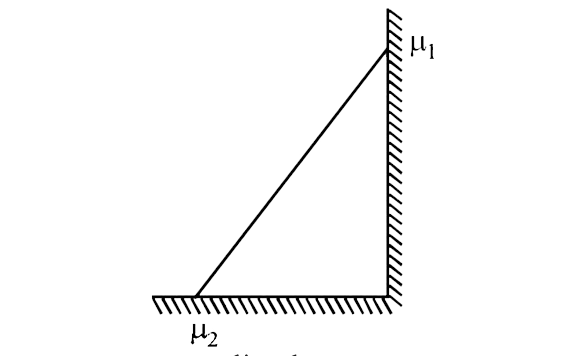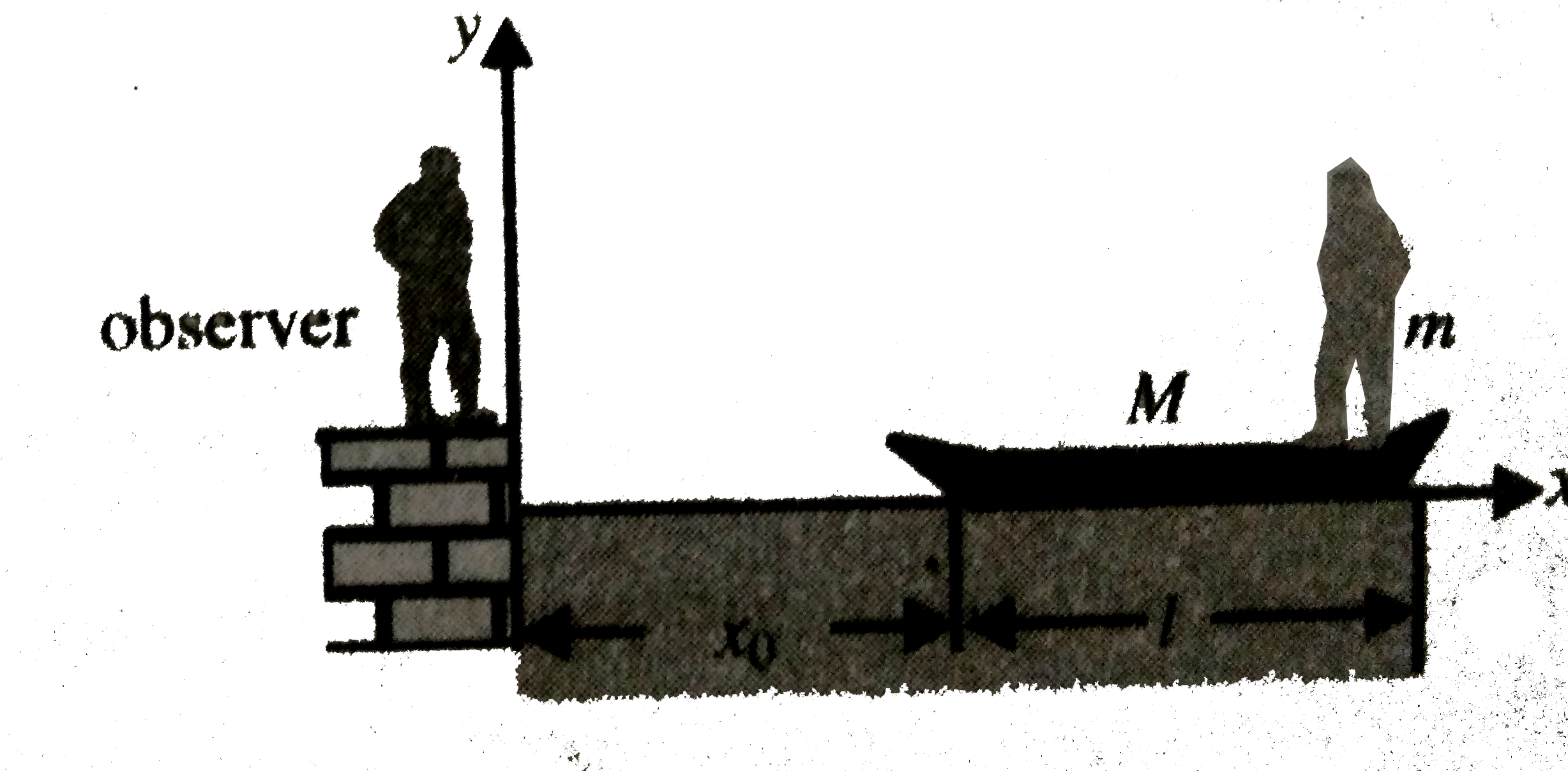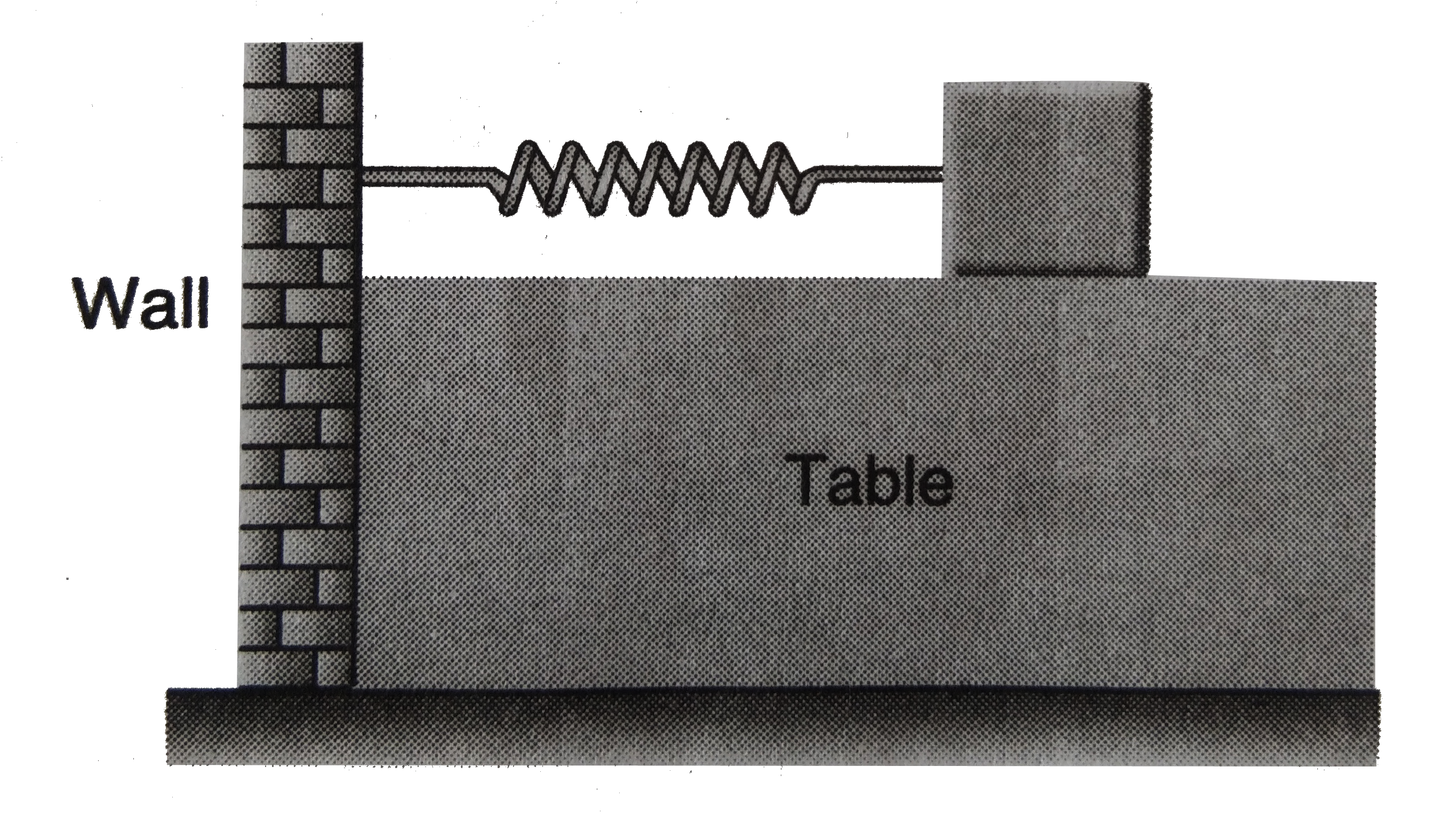A ladders is more likely to slip when a person is near the top than when he is near the bottom.
The friction between the ladder and floor decreases as he climbs up.
Statement I is True, Statement II is True, Statement ll is a correct explanation for Statement I.
Statement I is True, Statement II is True, Statement II is NOT a correct explanation for Statement I
Statement I is True, Statement II is False.
Statement I is False, Statement II is True.
The correct Answer is:C
To solve the problem, we need to analyze the situation of a ladder leaning against a wall with a person climbing it. We will evaluate the two statements provided in the question.
1. Understanding the Setup:
- Imagine a ladder resting against a wall with one end on the ground and the other against the wall. A person climbs the ladder.
2. Analyzing Statement 1:
- Statement: A ladder is more likely to slip when a person is near the top than when he is near the bottom.
- Reasoning: When the person is near the bottom, their weight creates a smaller torque about the base of the ladder because the perpendicular distance from the line of action of the weight to the base is smaller. Conversely, when the person is near the top, the torque due to their weight is larger because the distance is greater. This increased torque makes it more likely for the ladder to slip when the person is near the top.
- Conclusion: Statement 1 is true.
3. Analyzing Statement 2:
- Statement: The friction between the ladder and floor decreases as he climbs up.
- Reasoning: For the ladder to remain in static equilibrium, the torques must balance. As the person climbs up, the torque due to their weight increases, which means that more friction is required to prevent slipping. Therefore, the friction between the ladder and the floor cannot decrease; it must actually increase to counteract the increased torque.
- Conclusion: Statement 2 is false.
4. Final Conclusion:
- Since Statement 1 is true and Statement 2 is false, the correct option is the one that reflects this conclusion.
- Imagine a ladder resting against a wall with one end on the ground and the other against the wall. A person climbs the ladder.
- Statement: A ladder is more likely to slip when a person is near the top than when he is near the bottom.
- Reasoning: When the person is near the bottom, their weight creates a smaller torque about the base of the ladder because the perpendicular distance from the line of action of the weight to the base is smaller. Conversely, when the person is near the top, the torque due to their weight is larger because the distance is greater. This increased torque makes it more likely for the ladder to slip when the person is near the top.
- Conclusion: Statement 1 is true.
- Statement: The friction between the ladder and floor decreases as he climbs up.
- Reasoning: For the ladder to remain in static equilibrium, the torques must balance. As the person climbs up, the torque due to their weight increases, which means that more friction is required to prevent slipping. Therefore, the friction between the ladder and the floor cannot decrease; it must actually increase to counteract the increased torque.
- Conclusion: Statement 2 is false.
- Since Statement 1 is true and Statement 2 is false, the correct option is the one that reflects this conclusion.
Topper's Solved these Questions
- RIGID BODY DYNAMICS 2Book:CENGAGE PHYSICS ENGLISHChapter:RIGID BODY DYNAMICS 2Exercise:Linked Comprehension
Explore 71 Videos
- RIGID BODY DYNAMICS 2Book:CENGAGE PHYSICS ENGLISHChapter:RIGID BODY DYNAMICS 2Exercise:Integer
Explore 7 Videos
- RIGID BODY DYNAMICS 2Book:CENGAGE PHYSICS ENGLISHChapter:RIGID BODY DYNAMICS 2Exercise:Single Correct
Explore 142 Videos
- RIGID BODY DYNAMICS 1Book:CENGAGE PHYSICS ENGLISHChapter:RIGID BODY DYNAMICS 1Exercise:Integer
Explore 11 Videos
- SOUND WAVES AND DOPPLER EFFECTBook:CENGAGE PHYSICS ENGLISHChapter:SOUND WAVES AND DOPPLER EFFECTExercise:Integer
Explore 16 Videos
Similar Questions
The length of a uniform ladder of mass m is 1. It leans against a smooth wall making an angle θ with the horizontal. What should be the force of friction between the floor and ladder so that the ladder does not slip ?
View SolutionA uniform ladder of length L and mass m1 rests against a frictionless wall. The ladder makes an angle θ with the horizontal. (a) Find the horizontal and vertical forces the ground exerts on the base of the ladder when a firefighter of mass m2 is a distance x from the bottom. (b) If the ladder is just on the verge of slipping when the firefighter is a distance d from the bottom, what is the coefficient of static friction between ladder and ground?
View Solution
Knowledge Check
A ladder, metres long standing on a floor leans against a vertical wall . If the top of the ladder slides downwards at the rate of 10 cm/sec , then the rate at which the angel between the floor and the ladder is decreasing when the lower end of the ladder is 2 metres away from the wall is
A110 radian/secB120 radina/secC5 radian/secD10 radian/ sec
A ladder 5 m long is leaning against a wall. The bottom of the ladder is pulled along the ground,away from the wall at the rate of 10 cm/s. How fast is the angle between the ladder and the ground decreasing when the foot of the ladder is 2 m away from the wall?
View SolutionA ladder 5 m long is leaning against a wall. The bottom of the ladder is pulled along the ground,away from the wall at the rate of 10 cm/s. How fast is the angle between the ladder and the ground decreasing when the foot of the ladder is 2 m away from the wall?
View SolutionIn the figure, a ladder of mass m is shown leaning against a wall. It is in static equilibrium making an angle θ with the horizontal floor. The coefficient of friction between the wall and the ladder is μ1 and that between the floor and the ladder is μ2. the normal reaction of the wall on the ladder is N1 and that of the floor is N2. if the ladder is about to slip. than

View SolutionA ladder 5m long rests against a vertical wall. If its top slides down at the rate of 10cm/sec, then, when the foot of the ladder is 4m away from the wall, the angle between the floor and the ladder is decreasing at the rate of
View SolutionA man of mass m runs without sliding from rest from one end of a boat of mass M and length l with an acceleration a relative to the boat. If the friction between water and boat is neglected find the

a. acceleration of CM of the system (M+m)
b. acceleration of the man and boat
c. position of man at the time when he reaches to other end of the boat
d. frictional force
e. work done by friction on boat.
f. total work done by friction.
g. velocities of man and boat when the man reaches other end of the boat.
h. work down by man
View SolutionA small block of ice with mass 0.120kg is placed against a horizontal compressed spring mounted on a horizonta table top that is 1.90m above the floor. The spring has a force constant k=2300M/m and is initially compressed 0.045m. The mass of the spring is negligible. The spring is releaded and the block slock slides along the table, goes off the edge and travels to the floor. If there is negligible friction between the ice and the table, what is the speed of the block of ice when it reaches the floor. (g=9.8m/s2)
 .
.
View SolutionA man observe that was he has climbed up 13 of the length of an inclined ladder ,placed against a wall the angular depression of an object on the floor is α and that after he reached the top of the ledder , the angular depression β If the inclintaion of the ladder to the is θ then prove that cot θ=3cotβ−cotα2
View Solution